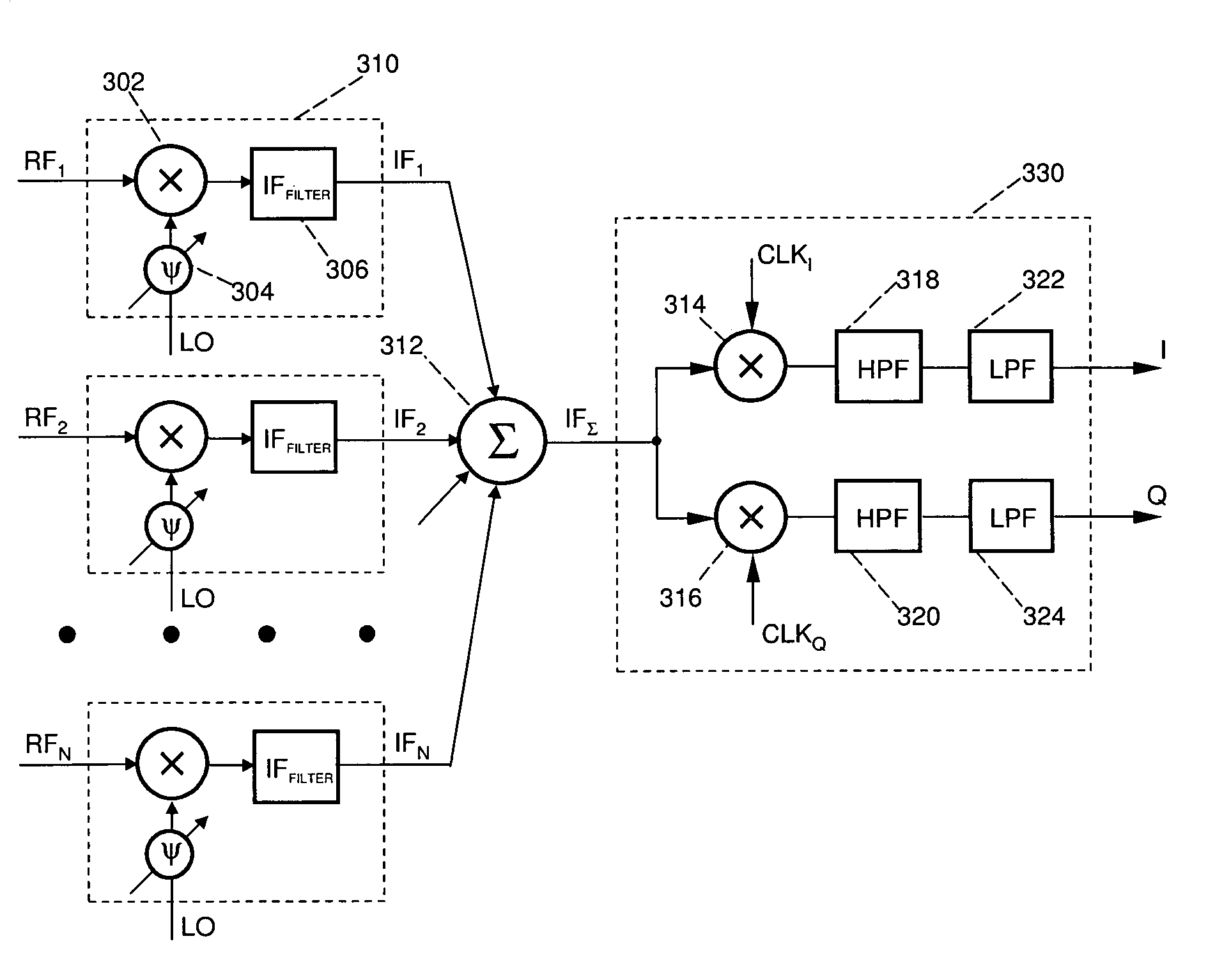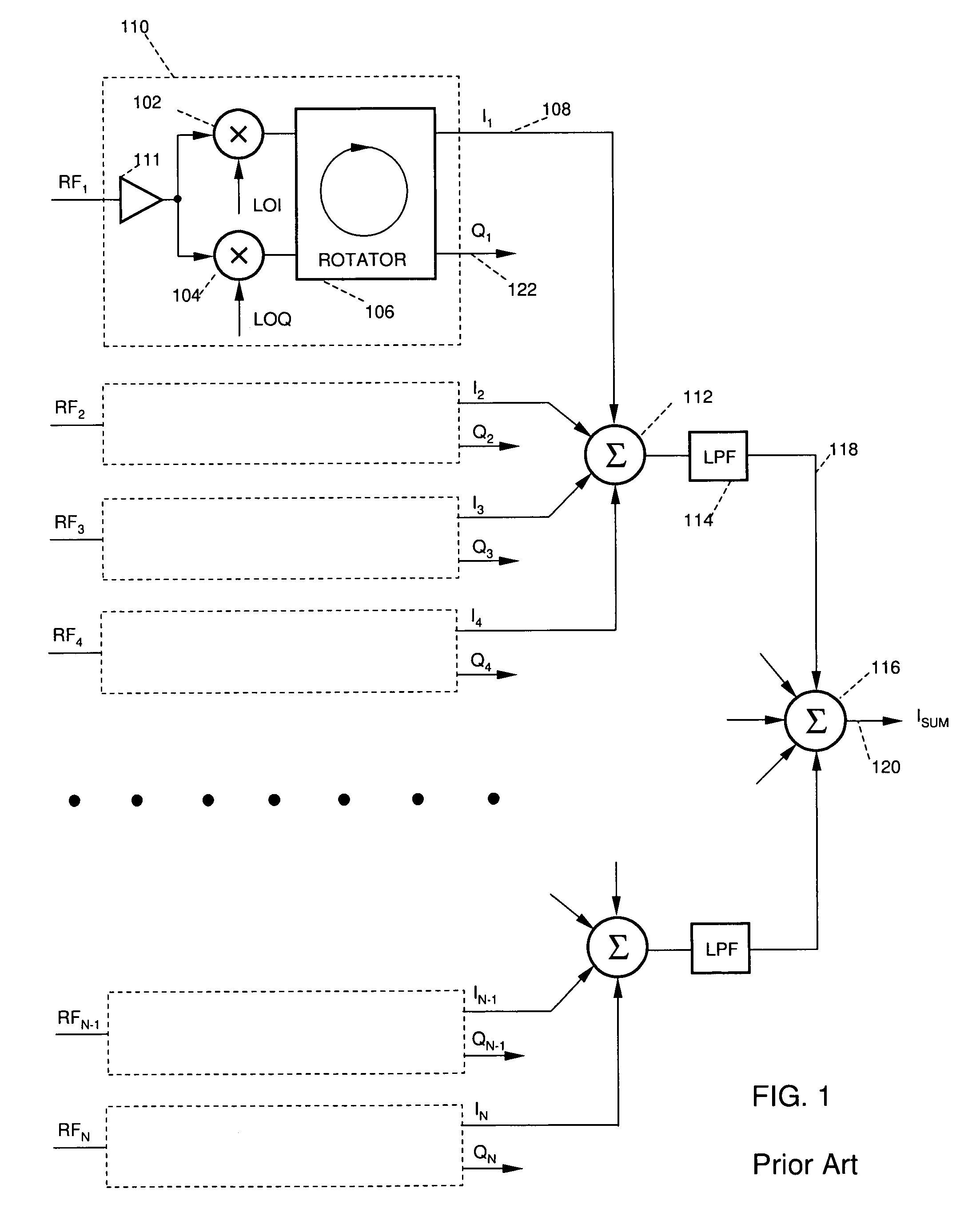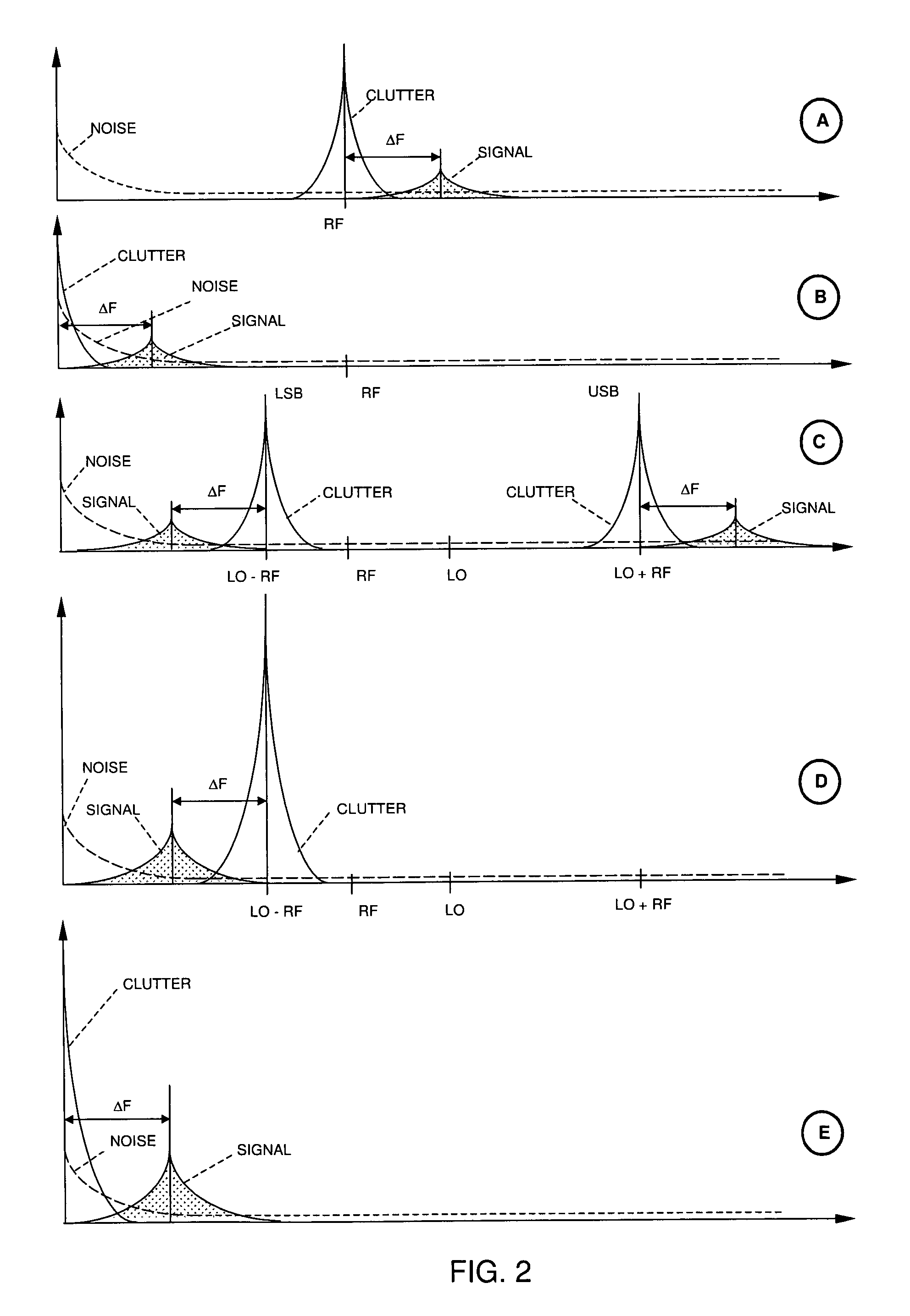Low-noise ultrasound method and beamformer system for doppler processing
a beamformer and low-noise technology, applied in tomography, instruments, using reradiation, etc., can solve the problems of frequency aliasing, fundamental rate limitations, and the limited ability of pw doppler to measure very high blood flow velocity, so as to achieve wide dynamic range, lower cost, and high power efficiency
- Summary
- Abstract
- Description
- Claims
- Application Information
AI Technical Summary
Benefits of technology
Problems solved by technology
Method used
Image
Examples
second embodiment
[0066]The foregoing description of the beamforming process assumed identity of the Doppler channels. While this is essentially true for multi-channel ICs in terms of gain and delay matching, the deviation of the filter response because of component tolerances might be an important factor to consider. FIG. 5 depicts CW Doppler beamformer allowing one to minimize the circuit sensitivity to variation in component values.
[0067]As illustrated, CW Doppler beamformer in FIG. 5 also comprises a plurality of N identical Doppler channels 510, an N-input summer 512, a downstream processor 530, and a multi-phase clock oscillator 540. Moreover, said summer, downstream processor, and clock oscillator are duplicates of respective units in FIG. 4.
first embodiment
[0068]Contradictory to the first embodiment, Doppler channel 510 has no IF filters but outputs both sidebands of the mixing process. Instead of per-channel filtering, there is a single IF filter 560 arranged to select either sideband of the beamformed signal MIXΣ. This approach avoids the problem of channel identity at the expense of doubling the amplitude range of signals at the channel output.
[0069]Important advantages of the above embodiments of the present invention can be summarized as follows:[0070]1. Implementing a direct-conversion CW Doppler beamformer, the spectrum of the per-channel quadrature components occupies the same frequencies as flicker noise. This overlapping substantially reduces the resulting SNR of D-mode acquisition.[0071]2. Translating a received RF signal to an IF, beamforming may occur at the frequency range, which is above of the 1 / f corner. Consequently, the proposed technique allows to improve the SNR as compared with prior art.[0072]3. Summing multiple...
PUM
 Login to View More
Login to View More Abstract
Description
Claims
Application Information
 Login to View More
Login to View More - R&D
- Intellectual Property
- Life Sciences
- Materials
- Tech Scout
- Unparalleled Data Quality
- Higher Quality Content
- 60% Fewer Hallucinations
Browse by: Latest US Patents, China's latest patents, Technical Efficacy Thesaurus, Application Domain, Technology Topic, Popular Technical Reports.
© 2025 PatSnap. All rights reserved.Legal|Privacy policy|Modern Slavery Act Transparency Statement|Sitemap|About US| Contact US: help@patsnap.com



